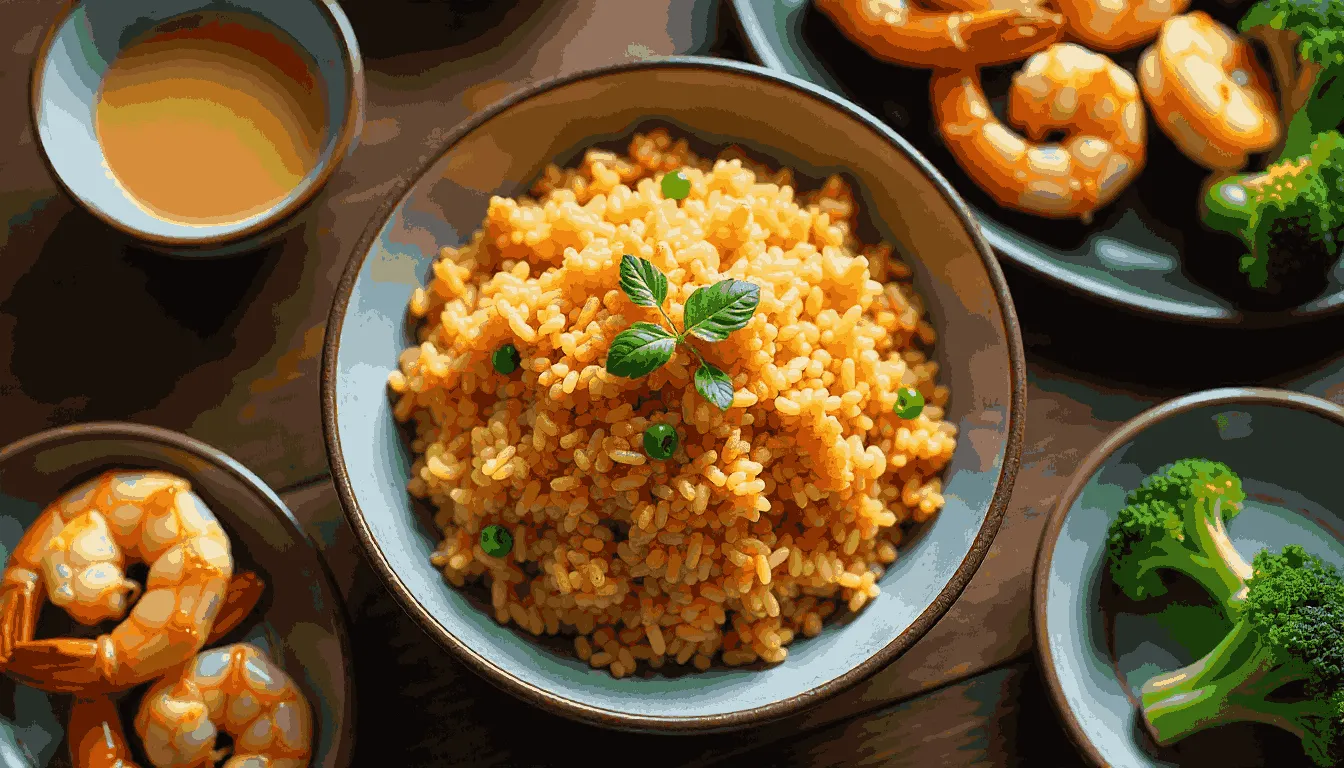That irresistible aroma of sizzling, spiced meat rotating on a vertical spit is a siren call. But what if you could capture that magic without the specialized equipment? What if you could create that same tender, flavor-packed gyro meat in your own oven? The good news is, you can. Mastering a classic gyro meat recipe is less about fancy tools and more about understanding a few simple techniques. This isn’t just a meatloaf. This is about recreating that authentic, slightly springy texture and the profound, savory flavor of garlic, oregano, and marjoram. Forget the mystery. With a blend of ground lamb and beef, a handful of pantry spices, and one simple prep secret, your house will smell like a Athenian street corner in no time. Let’s get started.
Why This Homemade Gyro Meat Recipe Beats Takeout Every Time
Let’s be honest. Store-bought or even some restaurant gyro meat can be a gamble. Sometimes it’s dry. Sometimes the seasoning is bland. When you take control in your own kitchen, you guarantee three things: quality, flavor, and satisfaction.
First, you control the meat. A traditional gyro meat recipe often uses a blend of lamb and beef. The lamb provides that distinctive, slightly gamey flavor, while the beef adds richness and helps bind everything together. You get to choose the fat content and quality, ensuring a juicy final product.
Second, you control the seasoning. The spice blend for gyros is iconic. It’s a sunny, aromatic mix that evokes the Mediterranean. By making it yourself, you can adjust the garlic, dial up the oregano, or add a pinch more cumin to suit your palate perfectly.
Finally, there’s the sheer pride. Slicing into a log of gyro meat that you made from scratch, smelling the incredible aromas fill your kitchen, and building the perfect pita for your family or friends, that’s an experience no takeout bag can provide.
The Secret to the Perfect Texture: A Binding Agent
The characteristic dense, sliceable texture of gyro meat comes from the way the proteins are processed. In professional kitchens, this is achieved by pounding the meat into a paste-like consistency using a large mixer or food processor. For our homemade gyro meat recipe, we use a simple, clever trick.
The key is a panade. A panade is a paste made from bread and milk. When mixed into ground meat, it acts as a binder, trapping moisture and ensuring the final product holds together beautifully when sliced. It’s the secret weapon for meatballs and meatloaf, and it’s absolutely essential for a gyro meat that doesn’t crumble.

Gathering Your Ingredients: The Flavor Foundation
The ingredient list is straightforward. The magic is in the combination.
The Meat Blend:
- 1 pound ground lamb
- 1 pound ground beef (80/20 lean-to-fat ratio is ideal for juiciness)
The Aromatics & Binder:
- 1/2 of a large yellow onion, roughly chopped
- 4 cloves garlic, minced
- 1/4 cup fine breadcrumbs
- 3 tablespoons milk
The Essential Spice Blend:
- 1 tablespoon dried oregano
- 2 teaspoons dried marjoram
- 1 teaspoon ground cumin
- 1 teaspoon smoked paprika
- 1 teaspoon fine sea salt
- 1/2 teaspoon freshly ground black pepper
Your Step-by-Step Homemade Gyro Meat Recipe
Follow these steps for a foolproof result every time.
Step 1: Create the Flavor Base
Preheat your oven to 325°F (160°C). In a small bowl, combine the breadcrumbs and milk to create your panade. Set it aside for a few minutes to allow the breadcrumbs to fully absorb the milk. This is your binding agent.
Step 2: Process the Aromatics
In the bowl of a food processor, add the roughly chopped onion and minced garlic. Pulse until the onion is very finely minced, almost to a paste. This ensures the flavor distributes evenly without leaving large chunks of onion in the final meat.
Step 3: Combine and Emulsify the Meat
To the food processor with the onion and garlic, add the ground lamb, ground beef, the breadcrumb panade, and all the spices: oregano, marjoram, cumin, paprika, salt, and pepper.
Now, process the mixture. Pulse for about 30 seconds, then scrape down the sides. Continue to process for another 60-90 seconds, until the mixture is very smooth, pale, and almost paste-like. This step is crucial for developing the protein structure that gives gyro meat its unique, firm-yet-tender texture.
Step 4: Shape and Bake
Lightly oil a baking sheet. Take the meat mixture and form it into a tight, compact log shape, roughly 9 inches long by 5 inches wide. Smooth the surface with your hands or a spatula.
Bake in the preheated oven for 45-55 minutes, or until the internal temperature reaches 165°F (74°C) on a meat thermometer. For a more authentic color and a slightly crispier exterior, you can broil the log for the final 2-3 minutes, watching it carefully to prevent burning.
Step 5: The Most Important Step: Rest and Slice
Once cooked, remove the gyro meat from the oven and let it rest for at least 15 minutes. This allows the juices to redistribute. Do not skip this step! Slicing it hot will cause it to crumble.
For the thinnest, most authentic slices, use an electric knife or a very sharp serrated knife. Slice against the grain into thin strips.
How to Serve Your Homemade Gyros
Now for the fun part, building your gyro! Warm up some soft pita bread. Pile on the thinly sliced gyro meat. Top it with crisp, cool shredded lettuce, diced tomatoes, and thinly sliced red onion. The final, non-negotiable touch? A generous drizzle of creamy, tangy tzatziki sauce.
For a truly epic homemade Greek feast, serve your gyros with a side of perfectly seasoned Greek lemon potatoes.

Pro Tips for Gyro Mastery
- Chill for Cleaner Slices: For absolutely perfect, clean slices, you can wrap the cooked and cooled gyro meat log in plastic wrap and refrigerate it for a few hours or overnight. This firms it up, making it even easier to slice paper-thin.
- No Food Processor? You can use a stand mixer with a paddle attachment on medium-high speed for 5-7 minutes. If mixing by hand, you’ll need to mix vigorously for a long time to achieve the right paste-like consistency.
- Make it Ahead: This is a fantastic meal-prep recipe. The entire log can be made 2-3 days in advance and stored in the refrigerator until you’re ready to slice and reheat.
- Reheating is Easy: The best way to reheat sliced gyro meat is in a dry, non-stick skillet over medium heat until it’s hot and slightly crispy at the edges.
The Final Slice: More Than Just a Meal
Creating your own gyro meat recipe from scratch is a rewarding kitchen project. It demystifies a beloved street food and turns it into a achievable, celebratory meal for any night of the week. The process of blending, seasoning, and baking fills your home with an aroma that promises something special. And that first bite, a warm pita stuffed with savory, homemade meat and cool tzatziki, is a taste of pure, uncomplicated joy. So, roll up your sleeves and get ready to say “Opa!” to your new favorite homemade feast.
Frequently Asked Questions (FAQ Section)
1. Can I make this gyro meat recipe with only beef or only lamb?
Yes, you can use all of one type of meat. Using all beef will give you a more familiar, milder flavor, while using all lamb will deliver a much stronger, gamier taste. The blend is traditionally preferred for its balance.
2. Why is my gyro meat crumbly?
This is usually due to one of two reasons: the meat mixture was not processed enough to develop the binding protein structure, or it was sliced while still too hot. Ensure you process it until it’s smooth and let it rest fully before slicing.
3. Can I cook gyro meat in a loaf pan?
You can, but it will steam more than bake, resulting in a softer exterior. Free-forming the log on a baking sheet allows for better browning and a texture closer to the spit-roasted version.
4. How long does homemade gyro meat last in the fridge?
Once cooked and cooled, your gyro meat will keep well in an airtight container in the refrigerator for 3-4 days.
5. What other recipes can I use leftover gyro meat for?
Leftover gyro meat is incredibly versatile! Use it as a topping for a Greek-style salad, stuff it into bell peppers, scramble it with eggs, or use it as a pizza topping with feta cheese and olives.
Images are generated by Freepik.










Leave a Reply